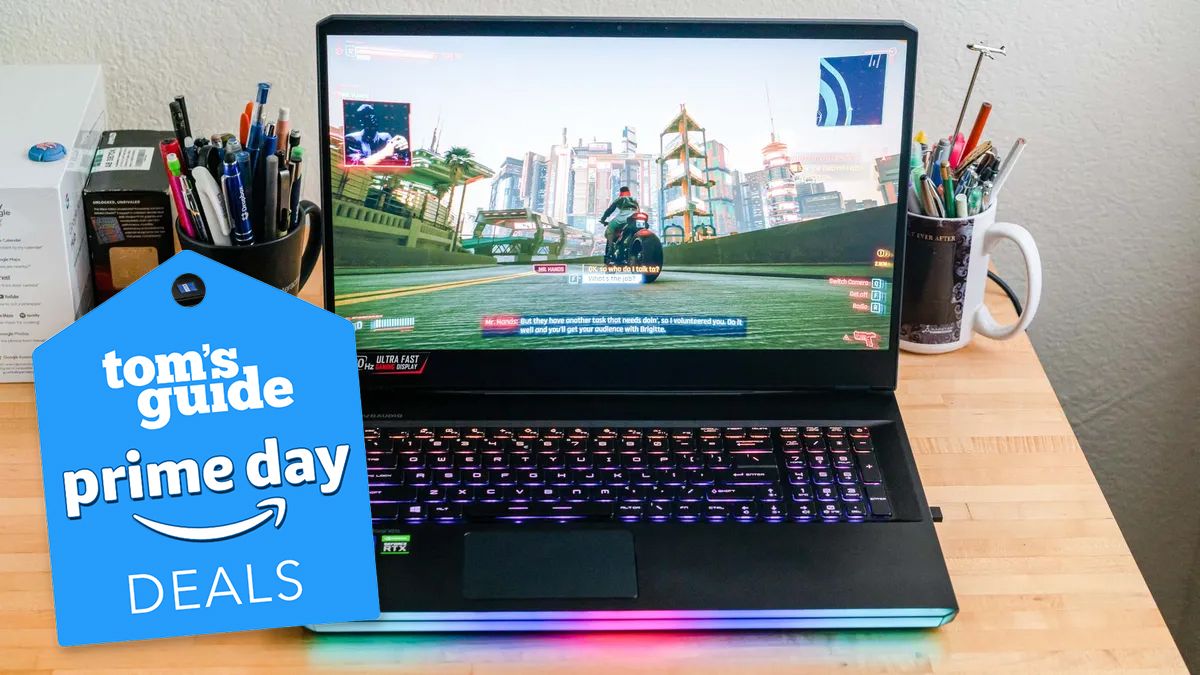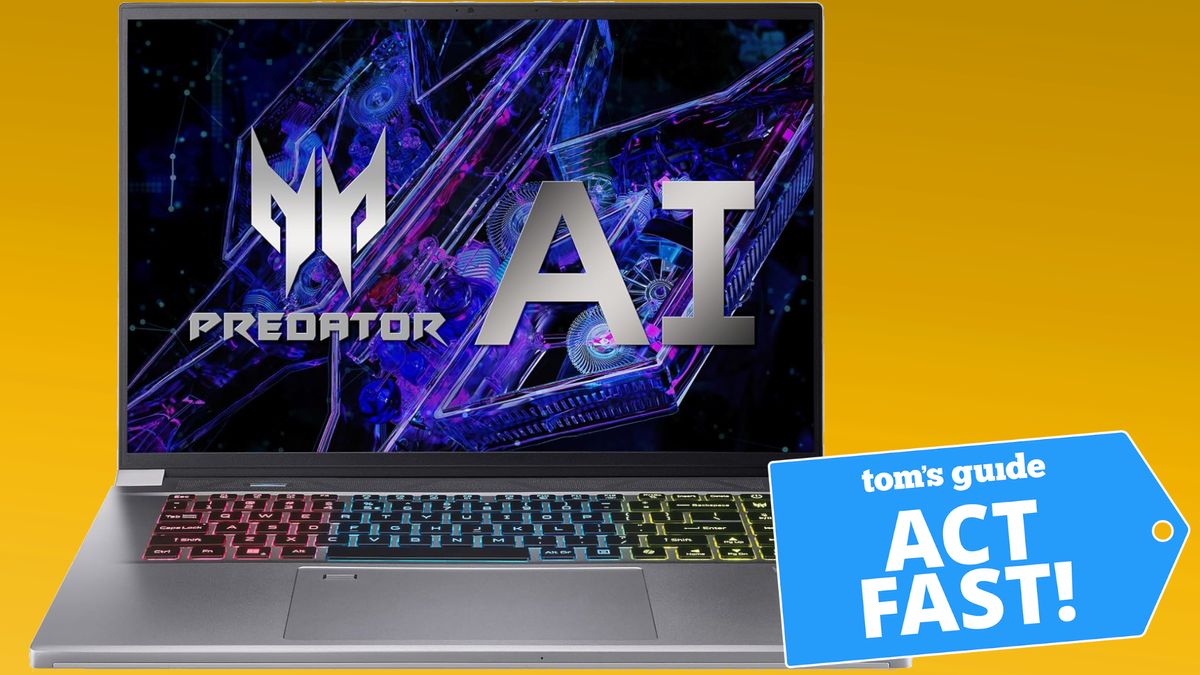Australia’s EOFY sales are now on, meaning you can nab a big discount on your next laptop if you grab one before June 30! Best of all, if you’re grabbing it for work, you can claim it as a deductible expense during the next tax time, otherwise you’ll have to wait until July next year to claim it.
If you’re looking for a top performing device, there’s a big range of Apple MacBooks on sale including the 2024 models, along with huge savings on laptops from Dell, HP, Lenovo and more!
Whether you want a classic clamshell device, or a versatile 2-in-1, the team here at Tom’s Guide has searched high and low to find the best laptop deals in the EOFY 2024 sales. Scroll down to check out the best laptop bargains we’ve found so far!
Retailers offering EOFY laptop deals
Below is a list of the main brands and retailers with EOFY laptop discounts to check out in case you don’t find what you’re looking for in our selection of hand-picked offers:
Best EOFY 2024 laptop deals
How to find the best laptop deal during EOFY 2024
When it comes to end-of-financial-year sales, there will be a plethora of discounted laptops on offer. It’s not a purchase you make every day, so it’s understandable if you don’t yet know the difference between your CPUs and GPUs, and all the jargon in between.
Whether it’s technical specifications, brand or type of device you’re unsure of, we’re here to help you make the right choice for your needs.
There’s sure to be a number of eye-catching discounts when it comes to tax-time bargain hunting, but the best advice we can give you is that if a laptop deal seems too good to be true, chances are it’s an older machine. While you’ll save a packet up front, an older model may not have enough power in its internals to keep running in the years to come, so you’ll likely have to upgrade sooner than you would’ve liked.
To help you avoid this, we’ve put together a short guide below so you can make an informed decision and get yourself the best laptop deal this June.

Features to look for
1. Brand name
So, what exactly should you keep an eye out for when buying a laptop? The best place to start is with the brand name. Considering you’ll be making a worthwhile investment, you’ll want to opt for a brand name you trust, such as Apple, Dell, HP, Lenovo, Microsoft, Acer or Asus. Proceed with caution when it comes to brand names you are unfamiliar with even if they come cheap – the initial saving may not prove to be worth it in the long run.
2. Portability
Once you’ve decided on the brand, the next thing to consider is the size of the machine. Most laptops come with screen sizes between 13 inches and 17 inches. The smaller sizes will certainly be more portable and, oftentimes, they’re more affordable as well (though this isn’t always the case – we’re looking at you, XPS 13).
The larger laptops, on the other hand, will offer more screen real estate, and more space inside the chassis to house powerful components, including a bigger battery. To determine the laptop’s display size, you’ll want to take a look at the tech specs. It’s not uncommon to see the screen size in the name of a product, take for instance, the HP Envy 15-ep1084TX which, as the name suggests, has a 15-inch monitor.
You’ll also want to consider the weight of the device as well – if you need to carry it around for work a lot, then a compact notebook or 2-in-1 weighing about 1.5kg or less is ideal.
3. Technical specifications
Now let’s get down to the nitty gritty – tech specs. There are four main components you’ll want to consider in this space: processor, system memory, storage and, depending on your needs, graphics.
First up, the processor, also referred to as the CPU. The processor is essentially the brains of a machine, and there are two major players in this race: Intel and AMD. The most common CPU you’ll come across in laptops is Intel, and its families of chips are available in Core i3, i5, i7 or i9.
While Intel’s Core i9 is the latest and most powerful processor available, the average user isn’t likely to need that kind of grunt unless it’s for heavy-duty tasks such as gaming and video editing.
On the opposite end of the spectrum, the Core i3 chips are built for basic tasks such as web browsing and word processing, and are ideal for someone who doesn’t require much power from their laptop.
For most people, the Core i5 or Core i7 series will fit just right. However, that’s not all you’ll need to consider – each Intel chip comes in a generation, and the most current is the 13th iteration. That said, the 12th-gen i5 CPUs are pretty powerful and you can confidently buy a machine powered by it. You’ll be able to find 10th- and 11th-generation CPUs also available, with the latter being the far superior option. That said, if you don’t need that kind grunt, you can save money by opting for a 10th generation processor, but a futureproof machine would be one powered by a 12th generation Intel Core CPU.
In comparison to Intel, there are fewer laptops powered by AMD Ryzen CPUs, though the 5000-series processors and the latest 7000 series can compete well with Intel.
The next thing to consider is system memory, also known as RAM. This is the component of your laptop that’s designed to hold your data while it’s in use, and 8GB of RAM is fairly standard across consumer laptops. System memory is important in terms of multitasking, so those in need of a machine for gaming, video editing or design programs, may want to consider a laptop with 16GB of RAM.
In terms of storage, it’ll come in the form of either a solid-state drive (SSD) or a hard disk drive (HDD). SSDs are what you’ll now commonly find in laptops, and we’d recommend you stick with them. They offer very reliable and long-lasting performance, and you’ll find that apps and programs will load much quicker.
Finally, to the graphics, otherwise known as the GPU. If you’re a casual gamer, laptops with integrated graphics should be fine – and this is what you’ll find in most laptops. That means the GPU is built into the CPU, offering basic performance.
If you’re deep into gaming, then you’ll need a discrete GPU that sits separate from the CPU. That will almost always come in the form of Nvidia or, if you’ve opted for an AMD processor, it’ll be Radeon. However, it’s worth noting that prices can soar quickly when it comes to powerful GPUs.
4. Display
Most mid-range laptops will offer a Full HD (1920 x 1080) display as standard, but there will be more budget options with 1366 x 768 resolution, which is fine for smaller screens.
In fact, a lower resolution is often great for a laptop with lower specs as there are fewer pixels for the processor and graphics card to shift, therefore optimising performance.
A higher resolution screen will get you a crisper image, but it’ll be a drain on your battery life and come at a cost. So while a 4K screen may look and sound like a great idea, it’ll take a serious toll on your machine’s core components. OLED panels are beginning to appear in laptops, though they come at a significantly higher price point, and there can be burn-in issues over time.
In the end, though, it’s sometimes worth sacrificing a bit of image quality for a smoother frame rate and longer battery life.










